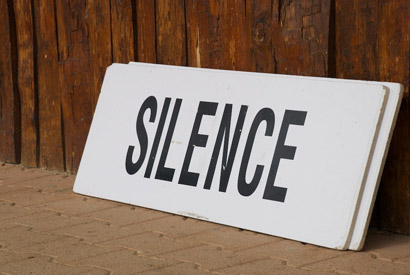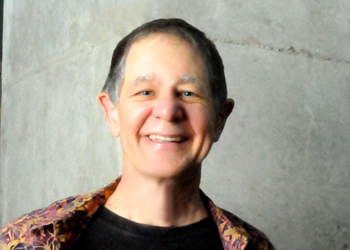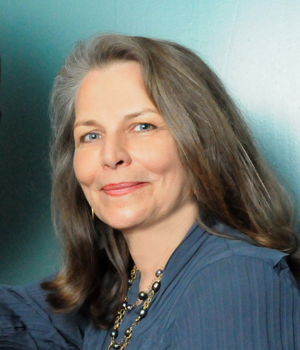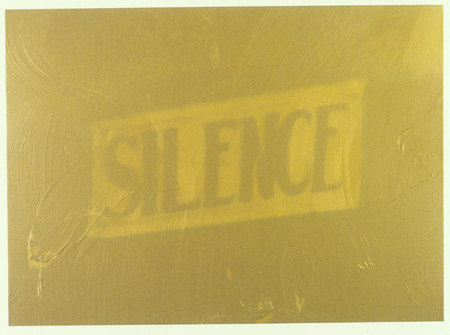Exploring the world of silence, charted or not
Drawing its inspiration from John Cage, a six-week OLLI course delves into art, music, film, neuroscience, bliss, edginess, paradox and more in what Susan Hoffman, OLLI's director, calls "an experiment" in experiential learning.

February 5, 2013
Just off the theater in the Berkeley Art Museum and Pacific Film Archive is an American Graffiti-style Rock-Ola jukebox fitted with 99 CDs, recordings not of golden oldies but moments of silence from every corner of the world. Drop in a quarter, though, and the moments turn out to be not-quite silent, pauses made up of random ambient noise and apt to be framed, like the law-enforcement memorial in the U.S. House of Representatives — selection number 45-01 — by a whole lot of talking.

David Presti (Peg Skorpinski photo)
Nearby, in the galleries, is the rest of a new BAM/PFA exhibition, Silence, featuring visual representations of silence by Marcel Duchamp, René Magritte, Robert Rauschenberg and Andy Warhol, among many others. (A linked monthlong film program, The Sounds of Silence, runs the gamut from the experimentalism of Stan Brakhage to the dreamily bleak imagery of Ingmar Bergman.)
And inside the theater, where they’ll return for the next five Thursday afternoons, upwards of 100 students — most of them 50 or older, plus a sprinkling of undergrads and community members of all ages — are listening to the first of a half-dozen lectures on the subject of silence, all to be given by microphone-wielding UC Berkeley luminaries in film, art, music, linguistics and neuroscience.
If all this sounds fraught with paradox, you’re beginning to get the idea.

Susan Hoffman (Peg Skorpinski photo)
“I think there’s controversy about whether or not silence exists,” says Susan Hoffman, director of UC Berkeley’s branch of the Osher Lifelong Learning Institutes, or OLLI, an “ongoing learning community” aimed at perpetual students from 50 to 100 years of age. Taking a cue from the exhibition — which was inspired by John Cage’s notorious “silent” composition 4’33” — lecturers in the class will show that silence is far more than an absence of sound. “It’s in that lightness-darkness area,” Hoffman says, “kind of what Tracy Chapman calls that ‘space between.'”
Hoffman, a poet and filmmaker, hatched plans for the course over lunch with Lawrence Rinder and Aimee Chang, the director and director of engagement, respectively, of BAM/PFA, which is co-sponsoring the class.
Her one condition for moving ahead, she says, was that Berkeley neurobiologist and cognitive scientist David Presti be available. “I knew we had to have both the aesthetics and the science,” she explains. “And then I knew we also had to have the polemics, of both silence and voice, and that’s [writer and playwright] Susan Griffin and [linguist and political consultant] George Lakoff — they’re that piece.”
Presti was not only available, but says he’s “honored” to be part of the OLLI class, “Dimensions of Silence in the Human Experience,” which he describes as “visionary.”

Christian Marclay: Gold Silence (The Electric Chair), 2006; Marieluise Hessel Collection, Hessel Museum of Art, Center for Curatorial Studies, Bard College, Annandale-on-Hudson, N.Y. (Photo courtesy BAM/PFA)
“The thing that attracted me the most was the collaborative aspect, the idea of doing an academic class together with the museum,” says Presti, a former clinical psychologist who’s taught both undergrads and graduate students at Berkeley for 20 years. But he was also intrigued by the prospect of integrating students in his introductory neuroscience course with an OLLI class, and particularly by the opportunity to share insights into what he calls “the brain stuff” — the ways in which perception emerges from physiology, in this case the human auditory system.
“The silence part of that is related to an interest I have in aspects of meditation, in the sense of endeavoring to sort of turn off outside sensory stimulation and focus inward,” says Presti, who’s made regular trips to Asia over the past decade to teach and conduct research with Tibetan monks. He plans to lead students in the OLLI class in a meditative exercise at the close of each session.
For this, his third teaching adventure with OLLI, he’ll deliver a lecture titled “Silence as a Hallucinogen.”
“The original meaning of the word ‘hallucinate’ was simply ‘to wander inside your mind,'” he explains. “If you shut out sensory stimuli from the outside world, and the brain and mind are free to go inward, wherever that takes us, interesting things can be discovered there — most of which have not even been broached yet by Western science.”
Edginess and bliss
At the course kickoff, students get a cinematic perspective from PFA video curator Steve Seid, who put together the Sounds of Silence program.
“It’s impossible to talk about silence without talking about sound,” he tells the class. The jukebox outside, he notes, captures one type of silence — commemorative silence — but there are many others. He ticks off a few: authoritarian, when we’re ordered to keep silent; the silence of resistance, when the refusal to speak is a statement of nonparticipation, or an exercise of one’s legal right; prosodic silence, the pauses between words. The list goes on.
Similarly, he suggests, it’s impossible to consider the musical composition that inspired the exhibition and class — Cage’s 4’33”, four minutes and 33 seconds during which, at its 1952 premiere, the pianist marked its three movements by simply raising and lowering the lid on the keyboard — without recognizing how sound informed the experience. The performance took place in a barnlike theater in Woodstock, N.Y., on a windy, rainy day, and noise from the surrounding environment — as well as coughing and rustling from the audience itself — filled the void from the stage.
“Cage realized you, as an object, are generating sound,” Seid says.
While some in the Woodstock audience appreciated the piece, many did not.
“Some of the audience got really upset. They didn’t like sitting there for four and a half minutes without anything happening,” recounts Presti. “There’s the sensory silence of what he was doing, or not doing. And then there’s all their mental noise, or craziness, or chaos, or whatever was making them angry. If it was only silence, they wouldn’t be angry. They’d be in a state of holistic bliss, or something like that. So it’s all relative.”
Even so, Presti knows that looking inward can take one to unexpected, potentially worrisome places. “Silence is definitely edgy,” he says. “Darkness is edgy.”
And even as he plans to lead a calming, meditative exercise at each class session, he wants students to explore the “edgy” side of silence, too, allowing themselves to hear the sounds that are usually blocked out by the noise of the outside world.
“In the best case, every lecture would shake people up a little bit,” he says. “It would open up some new territory, and provide some new ways of looking at the world.”
Hoffman, too, views the course as a sort of exploration, for herself and OLLI as much as the lecturers and students. “This is experiential learning,” she says. “For us it’s an experiment.”
In that spirit, she’s making the course into a kind of research project, and plans to compare students’ ideas about silence before and after they’ve attended the classes.
“We’ll see, in the end, what’s happened in-between,” she says. “Are they now going to be more self-conscious about the silence that they need? Did the silence help heighten their other senses? And if so, how? Was it a creative, fertile period for them?
“I’d love to hear people say that they’re dreaming more, or something like that,” she adds, laughing. “I mean, wouldn’t that be a great course evaluation?”
For more on the course, visit the OLLI website. For more about Silence, visit the BAM/PFA website.